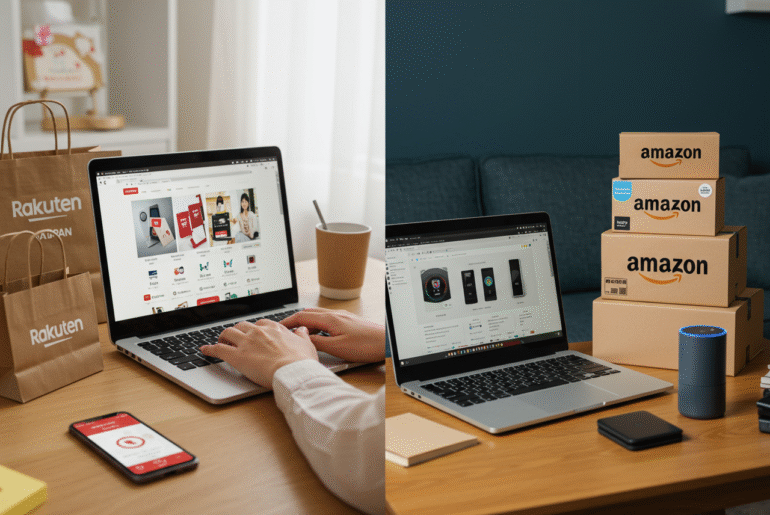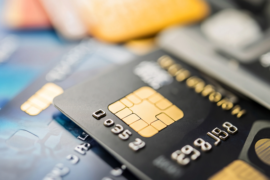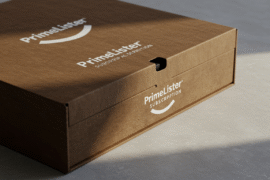This article may contain references to products or services from one or more of our advertisers or partners. We may receive compensation when you click on links to those products or services. Nonetheless, our opinions are our own.
The information presented in this article is accurate to the best of our knowledge at the time of publication. However, information is subject to change, and no guarantees are made about the continued accuracy or completeness of this content after its publication date.
Highlights
- Rakuten functions like a virtual shopping mall, giving sellers more control over their online stores. Amazon, by contrast, operates a closed ecosystem.
- Amazon Prime offers rapid shipping and access to exclusive videos. Rakuten provides cashback and Rakuten Super Points as part of its loyalty rewards system.
- Rakuten emphasizes brand image and customer experience through Omotenashi, a Japanese concept focused on hospitality and thoughtful service.
- Amazon and Rakuten charge sellers different types of fees, which can affect how much small businesses earn.
- Amazon prioritizes delivery efficiency and order reliability. Rakuten focuses more on customer loyalty and personalized service, especially in Japan.
Introduction
Choosing between Rakuten and Amazon can be difficult. Rakuten is often referred to as the “Amazon of Japan” due to its large domestic market presence and focus on local preferences. Amazon, on the other hand, is a global e-commerce leader known for its simplicity and efficiency. Whether you’re a frequent online shopper or a business owner, this comparison will help you understand the advantages and disadvantages of both platforms.
The Basics of Rakuten and Amazon
Rakuten has built its business by supporting sellers. The platform allows vendors to design their own storefronts, tailor branding, and tell the stories behind their products. Japanese consumers value this approach, as it builds trust and brand loyalty. Rakuten also integrates its services, such as banking, mobile, and travel, into a single ecosystem, powered by its loyalty program: Rakuten Super Points.
Amazon, in contrast, operates a streamlined, closed system focused on speed and reliability. It originated in the United States but now runs similar operations globally, including in Japan. This consistency ensures a familiar experience in ordering, delivery, and customer service across regions.
Brief History and Evolution of Rakuten
Rakuten Ichiba launched in Japan in 1997, founded by Hiroshi Mikitani after the 1995 Kobe earthquake. His goal was to empower local sellers and rebuild small businesses through digital commerce. Rakuten’s monthly fee structure and educational initiatives such as Rakuten University set it apart from other platforms.
The company has expanded globally and now serves over one billion users. Its ecosystem includes e-commerce, fintech, digital content, and communications. Rakuten Super Points, the centerpiece of its loyalty strategy, had distributed more than four trillion points by 2024.
Rakuten’s dedication to Omotenashi, showing respect and providing exceptional service, reinforces its appeal in Japan. This cultural focus helps Rakuten maintain a strong identity in the face of global competition.
Brief History and Evolution of Amazon
Amazon was founded in 1994 by Jeff Bezos as an online bookstore in the United States. It evolved into a leading global e-commerce platform by adopting innovative technologies and customer-first practices. In 2000, Amazon entered the Japanese market, applying the same business model used in the U.S.
Initially, Amazon Japan struggled, but it invested heavily in logistics and infrastructure. Today, it operates over a dozen distribution centers and four Amazon Prime hubs in Japan. Its Fulfillment by Amazon (FBA) program supports both local and international sellers, offering rapid shipping and efficient customer service.
Amazon Japan now excels in speedy delivery, extensive content offerings, and powerful advertising tools, all of which benefit businesses and consumers alike.
Analyzing Rakuten and Amazon’s Business Models
Rakuten allows sellers to create personalized online stores with full control over branding, customer engagement, and fulfillment. While this setup enables creativity, it also requires sellers to manage their logistics and customer support.
Amazon, however, focuses on simplicity and efficiency. Its FBA service handles shipping, inventory, and returns, reducing the seller’s workload but also limiting branding flexibility. These models reflect different priorities: Rakuten values seller independence and brand identity, while Amazon prioritizes streamlined transactions and scalability.
Marketplace Structures and Seller Ecosystems
Rakuten provides a customizable storefront model that allows sellers to build their brand and engage directly with customers, an approach well-suited to Japanese consumers who seek authenticity and trust.
Amazon, in contrast, standardizes listings and emphasizes competitive pricing. This design benefits buyers seeking convenience but restricts sellers’ ability to differentiate through branding.
Revenue Streams and Monetization Approaches
Rakuten and Amazon generate revenue through different strategies:
| Revenue Stream | Rakuten | Amazon |
|---|---|---|
| Cash back | Commission from sellers; cashback shared with buyers | No platform-wide cashback program |
| Transaction Fees | Varies by product (2.9%–15%) | Standardized across most products (8%–15%) |
| Subscription Plans | Premium storefront options with tiered fees | Professional and Individual seller plans |
| Advertising Tools | R-Mail for email marketing, customized brand promotion | Display ads, Sponsored Listings, and API-based campaign tools |
These models impact how sellers operate and how customers perceive value on each platform.
Features and Services for Shoppers
Rakuten rewards engagement across its ecosystem. Shoppers earn Super Points from shopping, banking, or using Rakuten’s mobile services, encouraging long-term loyalty.
Amazon emphasizes speed and convenience through features like Amazon Prime, personalized product pages, and one-click checkout.
Each platform offers a unique value: Rakuten fosters loyalty and brand trust, while Amazon offers ease of use and speed.
Product Selection and Variety
Amazon dominates in product variety and user-friendly navigation. With advanced search filters, customer reviews, and competitive pricing, it appeals to time-conscious shoppers.
Rakuten focuses on curating products with quality and cultural relevance. Merchants create unique product pages that highlight craftsmanship and local stories.
- Amazon: Best for variety and fast decision-making.
- Rakuten: Best for authenticity and storytelling.
Loyalty Programs and Rewards
- Rakuten: Cashback and points earned across services add tangible value for loyal users.
- Amazon Prime: Includes rapid shipping, streaming content, and exclusive deals under a single subscription.
Your choice depends on whether you prefer monetary rewards or premium convenience.
Voted "Best Overall Budgeting App" by Forbes and WSJ
Monarch Money helps you budget, track spending, set goals, and plan your financial future—all in one app.
Get 50% OFF your first year with code MONARCHVIP
Comparison of Rakuten and Amazon for Beginners
| Feature | Rakuten | Amazon |
|---|---|---|
| Founding Year | 1997 | 1994 |
| Headquarters | Tokyo, Japan | Seattle, Washington, U.S. |
| Founder(s) | Hiroshi Mikitani | Jeff Bezos |
| Key Services/Products | E-commerce (Rakuten Ichiba), FinTech (credit cards, banking), Digital Content (e-books, streaming), Communications (mobile network) | E-commerce, Cloud Computing (AWS), Digital Streaming (Prime Video, Music), Artificial Intelligence (Alexa), Consumer Electronics |
| Business Model | Primarily marketplace-based e-commerce with a strong emphasis on a loyalty program (Rakuten Points) across diverse services. | Online retail with a strong focus on customer convenience, supported by subscription services (Amazon Prime) and a dominant cloud computing platform (AWS). |
| Global Presence | Significant presence in Japan, with operations and investments in various countries globally (e.g., the U.S., Europe, and Asia). | The company maintains a worldwide reach, conducting operations in various regions such as North America, South America, Europe, Asia, Africa, and Oceania. |
| Notable Subsidiaries/Acquisitions | Rakuten Mobile, Rakuten Card, Rakuten Kobo, Viber, OverDrive, Ebates (now Rakuten Rewards) | Amazon Web Services (AWS), Whole Foods Market, Zappos, Twitch, IMDb, Ring, Eero |
| Revenue Focus | Diversified revenue streams from e-commerce, fintech, and digital content, heavily reliant on the Japanese market. | Large-scale e-commerce sales, significant revenue from Amazon Web Services (AWS), advertising, and subscriptions. |
Rakuten requires storefront approval and active participation in branding and rewards programs. It’s ideal for businesses wanting greater control over their image.
Amazon offers a simpler onboarding process. With global infrastructure and FBA, it’s a better fit for sellers seeking automation and broader reach.
What You’ll Need to Get Started:
- Rakuten: Email registration, business verification, optional Super Points enrollment.
- Amazon: Payment method (credit card), basic account information.
Both platforms offer mobile apps that support quick shopping and account management.
How to Make Your First Purchase in Steps
1. Create an Account
- Rakuten: Requires merchant verification for sellers.
- Amazon: Simple online signup; verify by email.
2. Browse Products
- Rakuten: Rewards and seller identity are visible on product pages.
- Amazon: Uses AI filters and advanced search tools for quick product discovery.
3. Compare Prices and Read Reviews
Read customer feedback and compare deals on both platforms before choosing.
4. Checkout and Track Orders
- Rakuten: Confirms cashback and points during payment.
- Amazon: One-click checkout and detailed tracking updates.
Delivery, Returns, and Customer Support
Shipping Options and Speed
- Amazon Prime: Same-day or next-day delivery for many items.
- Rakuten: Shipping times vary depending on the seller.
Return Policies and Customer Support
- Amazon: Consistent and easy return process; 24/7 customer support.
- Rakuten: Return policies differ by seller; support is available via email and chat.
Final Thoughts
Both Rakuten and Amazon are strong choices for online shopping. Rakuten stands out with its loyalty rewards and emphasis on seller identity, while Amazon leads in product variety and delivery speed. The right choice depends on your priorities, whether you value brand engagement and cashback or quick access and rapid shipping. Review their features, loyalty programs, and user experiences to decide which fits your lifestyle and budget best.
Frequently Asked Questions
What is the main difference between Rakuten and Amazon for shoppers?
Rakuten emphasizes customer loyalty through cashback and Super Points, along with personalized service rooted in Japanese hospitality (Omotenashi). Amazon focuses on speed, efficiency, and a seamless shopping experience with features like Amazon Prime and one-click checkout.
How do Rakuten and Amazon differ for sellers?
Rakuten gives sellers more control over branding and storefront customization, making it ideal for businesses seeking to build a unique identity. Amazon offers a simplified process with Fulfillment by Amazon (FBA) but limits seller customization in favor of standardized listings and rapid delivery.
Which platform offers better loyalty rewards, Rakuten or Amazon?
Rakuten offers a comprehensive loyalty program where users earn Super Points and cashback across its ecosystem, including banking and mobile services. Amazon offers loyalty perks through Amazon Prime, such as free shipping and exclusive content, but does not have a unified cashback program.
Is Rakuten or Amazon better for first-time online shoppers?
Amazon is generally easier for beginners due to its streamlined onboarding, rapid delivery, and simple checkout process. Rakuten may appeal to those who appreciate personalized service, rewards, and supporting independent sellers, but it requires more involvement when setting up as a seller.

Reviewed and edited by Albert Fang.
See a typo or want to suggest an edit/revision to the content? Use the contact us form to provide feedback.
At FangWallet, we value editorial integrity and open collaboration in curating quality content for readers to enjoy. Much appreciated for the assist.
Did you like our article and find it insightful? We encourage sharing the article link with family and friends to benefit as well - better yet, sharing on social media. Thank you for the support! 🍉
Article Title: Rakuten vs. Amazon: Which is Best for Your Purchases?
https://fangwallet.com/2025/06/11/rakuten-vs-amazon/The FangWallet Promise
FangWallet is an editorially independent resource - founded on breaking down challenging financial concepts for anyone to understand since 2014. While we adhere to editorial integrity, note that this post may contain references to products from our partners.
The FangWallet promise is always to have your best interest in mind and be transparent and honest about the financial picture.
Become an Insider

Subscribe to get a free daily budget planner printable to help get your money on track!
Make passive money the right way. No spam.
Editorial Disclaimer: The editorial content on this page is not provided by any of the companies mentioned. The opinions expressed here are the author's alone.
The content of this website is for informational purposes only and does not represent investment advice, or an offer or solicitation to buy or sell any security, investment, or product. Investors are encouraged to do their own due diligence, and, if necessary, consult professional advising before making any investment decisions. Investing involves a high degree of risk, and financial losses may occur including the potential loss of principal.
Source Citation References:
+ Inspo
There are no additional citations or references to note for this article at this time.











































